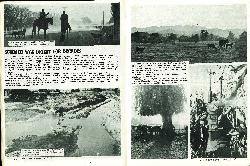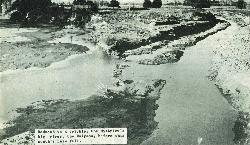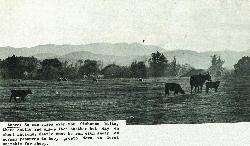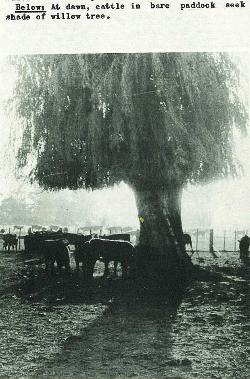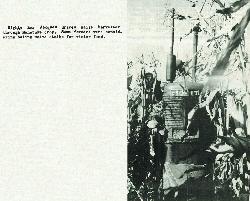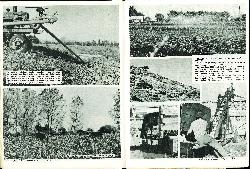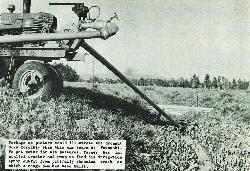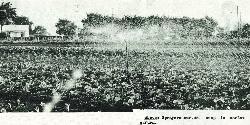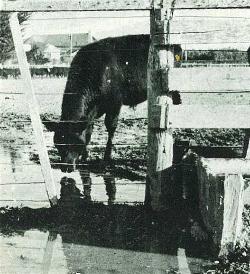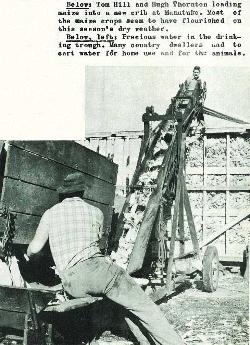20
Summer Was Driest For Decades
Not since 1925—26 had Gisborne experienced so dry a summer. From September 1 to April 30, only 11½ inches of rain fell. In the same time, the sun shone for just on 1500 hours. In a year noted for severe flooding elsewhere, happy visitors came to look on Gisborne as the home of the sun.
But to farmers in the country districts, each day's rising sun was an omen of disaster. Old-timers remembered only too well how in 1926 the paddocks of East Coast farms were littered with the bodies of dying animals, starved to death on the bare pastures. It was estimated that 15,000 head of cattle died, and as many again were put through the works for their hides and manure value, then about 15/-a head.
This year, most farmers do not consider things will be as bad as that. There are many factors to improve the situation. Transport facilities are better, so that stock can be moved faster and easier. Already thousands of head of cattle have been sold to buyers elsewhere in the country where feed is more plentiful. Irrigation had helped in some cases. More is known about artificial feeding. And this month the drought was broken by heavy rain which, depending on the weather to come, may help depleted herds through the winter.
21
As sun rises over the Gisborne hills, these cattle and sheep face another hot day on short rations. Cattle must be run with sheep on normal pastures to keep growth down to level suitable for sheep.
At dawn, cattle in bare paddock seek shade of willow tree.
Les Jacques drives maize harvester through Manutuke crop. Some farmers were considering baling maize stalks for winter feed.
22
Perhaps no picture could illustrate the drought more forcibly than this one taken at Patutahi. To get water for his pastures, farmer has installed tractor and pump to feed his irrigation spray outfit from pitifully shrunken creek on which a rough dam has been built.
Cattle feeding on maize stalks at Manutuke
23
Sprayers nurture crop in market garden.
Hardy sheep can make do on hill pastures even in tough times.
Precious water in the drinking trough. Many country dwellers had to cart water for home use and for the animals.
Tom Hill and Hugh Thornton loading maize into a new crib at Manutuke. Most of the maize crops seem to have flourished on this season's dry weather.


